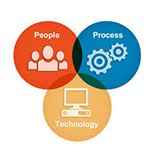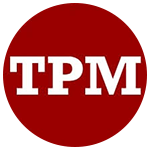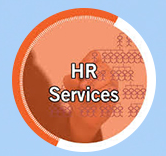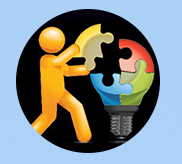Total productive maintenance (TPM) originated in Japan in 1971 as a method for improved machine availability through better utilization of maintenance and production resources.
TPM is a maintenance process developed for improving productivity by making processes more reliable and less wasteful. TPM is an extension of TQM (Total Quality Management)
Why TPM?
TPM was introduced to achieve the following objectives. The important ones are listed below.
- Avoid wastage in a quickly changing economic environment.
- Producing goods without reducing product quality.
- Reduce cost.
- Produce a low batch quantity at the earliest possible time.
- Goods send to the customers must be non-defective.
- “Strategy of TPM is to change the attitude from “I use, You Maintain” to “I Use, I Maintain”.
- TPM think about how to Increase production and reduce cost by reducing or eliminating loss.
- To improve equipment effectiveness.
- To achieve autonomous Maintenance
- TPM allows the people who operate equipment to take responsibility of the maintenance tasks.
- TPM has a systematic approach to all maintenance activities.
- TPM aims to move towards zero maintenance through “Maintenance Prevention”.
Our experienced Professional team shall guide the organization in,
Autonomous Maintenance (JISHU HOZEN)
- A collaborative team activity involving production, maintenance, and engineering.
- Maintaining Basic conditions on shop floor & in Machines.
- All over participation through TPM Circles.
- Example: 5 S, JISHU HOZEN (Autonomous maintenance), etc.
- An approach that, Develops operating and maintenance skills
Focused Improvement (KOBETZU KAIZEN)
- Improvement on every one’s activity.
- Improvement is to eliminate Production losses and cost reduction.
- Improvement in Reliability, Maintainability, and cost.
Planned Maintenance
- Logical analysis “Real causes for real counter measures”.
- Focus on Prevention.
- It is aimed to have trouble free machines and equipment producing defect free products for total customer satisfaction.
- Example: Preventive Maintenance, Breakdown Maintenance, etc.
Quality Maintenance
- Developing perfect machine for perfect Quality.
- Eliminating In– Process defects and custom complaints.
- Defect free conditions and control of equipments.
- QM activities to support quality assurance.
- Focus of prevention of defects at source
- Focus on POKA-YOKE. (Mistake proofing system)
- In-line detection and segregation of defects.
- Effective implementation of operator quality assurance.
Safety, Health & Environment
- Zero accidents and Zero hazards at work.
- Zero Pollution at Plant and Environment.
- Development ManagementDeveloping machines for “high equipment effectiveness”.
- Quick process for developing new products.
- Example: KAIZEN
- Practice concepts of zero losses in every sphere of activity.
- Relentless pursuit to achieve cost reduction targets in all resources.
- Relentless pursuit to improve over all plant equipment effectiveness.
- Extensive use of PM analysis as a tool for eliminating losses.
- Focus on easy handling for operators.
Office TPM
- Office TPM must be followed to improve productivity, efficiency in the administrative functions and identify and eliminate losses. This includes analyzing processes and procedures towards increased office automation.
- Providing awareness about office TPM to all support departments
- Help to identify PQCDSM in each function in relation to plant performance
- Identify the scope for improvement in each function
- Help to solve problems in their circles
Education & Training
- Skills development for uniformity of work practices on machines.
- Skills for Zero defects, Zero breakdowns & Zero accidents.
- Multi Skilled employees in all departments
Benefits of TPM:
- Higher confidence level among the employees.
- Keep the work place clean, neat and attractive.
- Favorable change in the attitude of the operators.
- Achieve goals by working as team.
- Horizontal deployment of a new concept in all areas of the organization.
- Share knowledge and experience.
- The workers get a feeling of owning the machine.
Our team shall provide necessary guidance and support for cultural shift towards ownership concept and implementation of TPM in the organization.













